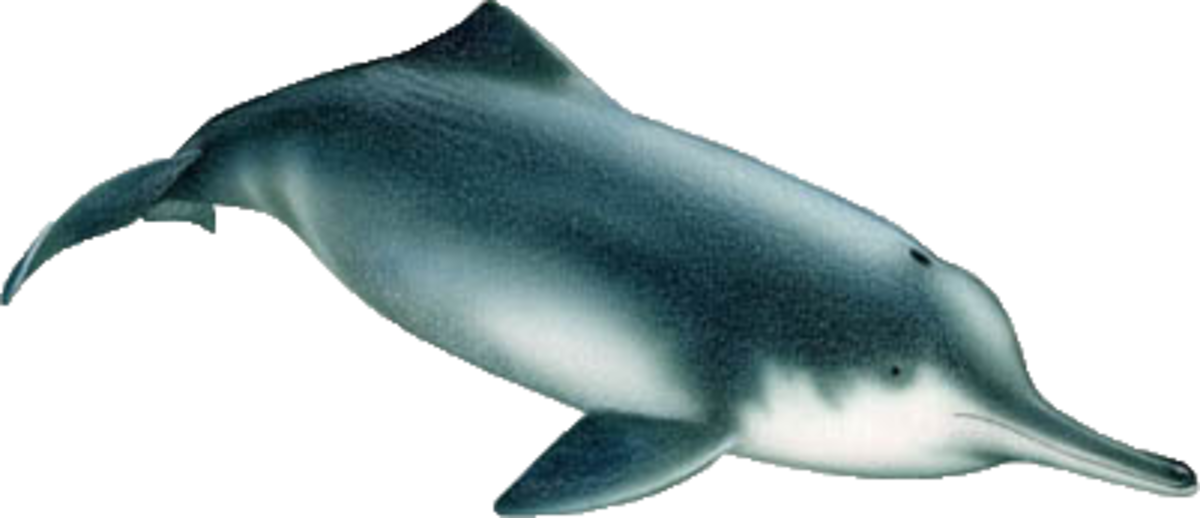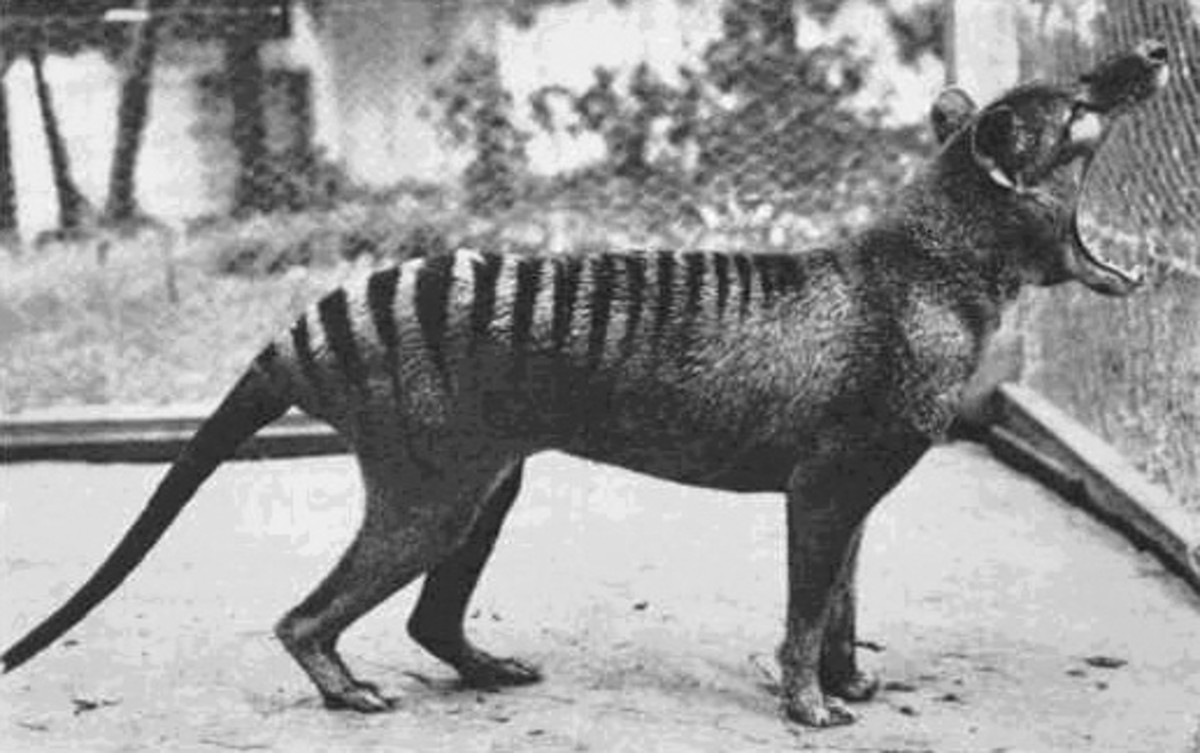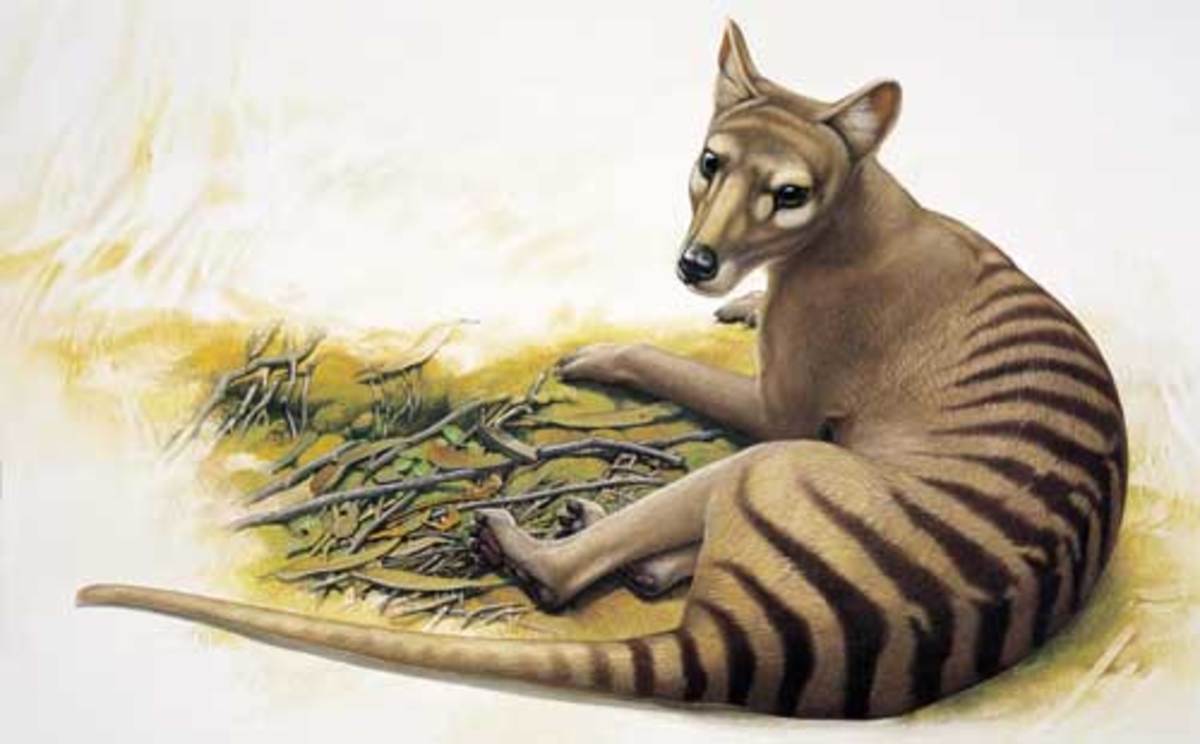- HubPages»
- Education and Science»
- Life Sciences»
- Endangered Species
6 Extraordinary Extinct Non-Dinosaur Animals
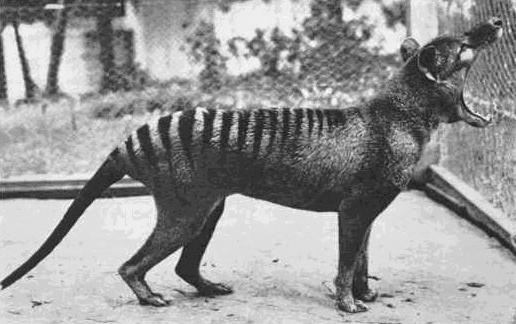
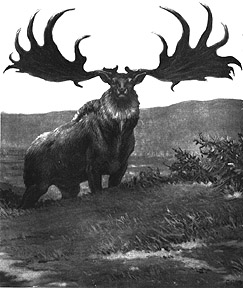
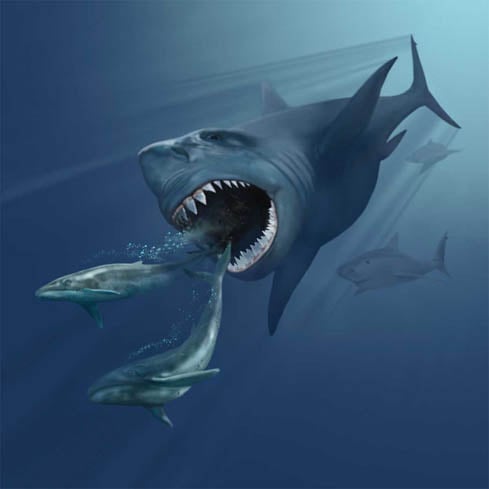
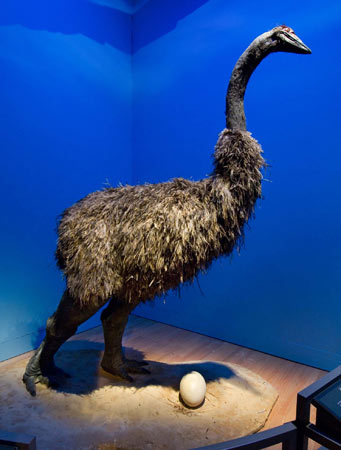
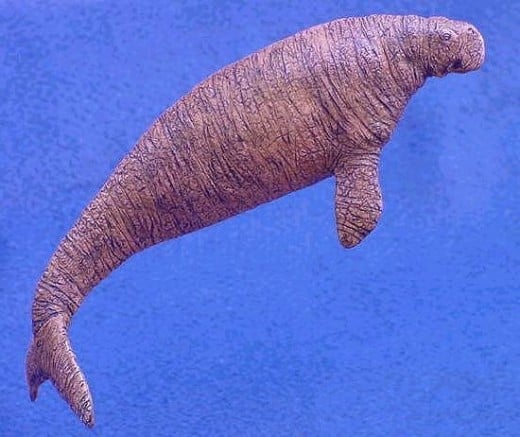
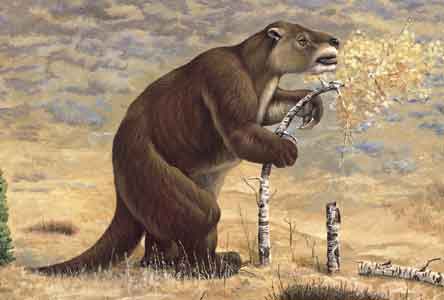
Some of the most interesting and amazing creatures are those that no longer exist. Many extinct animals are reminiscent to those that still walk the earth today, except that they were often more exaggerated in appearance (in respect to size). Most people would also not be very keen with the idea of coming face to face with some of these creatures.
The following are six of the most extraordinary animals that are not dinosaurs to have ever existed.
Thylacine
The Thylacine was native to Australia and New Guinea. It was also known as the Tasmanian Tiger because of the stripes on its back, or the Tasmanian Wolf because of its dog-like appearance. However, it was actually a carnivorous marsupial.
The Thylacine became extinct on the Australian mainland about 2000 years ago due to hunting, but managed to survive on the island of Tasmania. However, once Europeans began to inhabit the island, their numbers rapidly declined. This also was a result of excessive hunting, in part due to farmers protecting their livestock, though issues such as the introduction of dogs is also believed to have caused it.
The last Thylacine that was found was captured in 1936, but died three years later in a zoo in Australia.
Giant Deer
The Irish Elk, also known as the Giant Deer, inhabited Eurasia during the Late Pleistocene epoch. The most recently found remains of the species were carbon dated to around 7,700 years ago. It is one of the largest known species of deer to have ever existed, reaching up to 7 feet in height at the shoulder. Its massive antlers extended to 12 feet from tip to tip and weighed up to 90 pounds.
The cause(s) of the extinction of the Irish Elk is debatable. It is suggested that hunting by man was a contributing factor, or even that the giant antlers of the males restricted their movement and thus made them more vulnerable.
Megalodon
The Megalodon was an enormous shark that lived during the Cenozoic Era from roughly 28 to 1.5 million years ago. It is the largest carnivorous fish to have ever existed and is estimated to have reached lengths of 40 to 100 feet and possibly weighed as much as 50 tons. The teeth measured up to over 7 inches long. It is thought that the majority of the Megalodon's diet consisted of whales and that they used a similar hunting technique to that of the Great White.
One theory on the cause of their extinction is a drop in ocean temperatures that occurred during the mid-Pliocene as a result of an ice age. Another is that the whales that they preyed upon had begun to migrate to colder waters, while the Megalodons could only thrive in warmer temperatures.
Aepyornis
The Aepyornis, also known as the Elephant Bird, was a giant flightless bird with an elongated neck. It was the largest bird to have lived, reaching heights of up to 10 feet in height and weighing at close to half a ton. Its eggs were also the world's largest and sometimes reached lengths of 13 inches and a circumference of over 3 feet.
The Aepyornis became extinct around 1000 years ago. The cause of their extinction is believed to have been hunting by humans, although another theory that has been suggested is that the giant birds had contracted diseases introduced by animals (such as chickens) that arrived with the people who migrated to the area, causing the species to die out.
Stellar's Sea Cow
The Stellar's Sea Cow was a very large but gentle herbivorous marine mammal that was closely related to the dugong and manatee. It grew 25 to 30 feet in length and weighed up to 3 tons. The animal had a tail similar to a whale's and two very short forelimbs. Its head was also very small compared to its enormous body. The Sea Cow didn't have any teeth; instead, it only had two flat white bones, one on the top and the other on the bottom row of its mouth.
It is named after Georg Wilhelm Stellar, a naturalist who discovered the creature while traveling with the explorer, Vitus Bering. By 1768 and within less than 30 years of its discovery, the Sea Cow was hunted to extinction.
Giant Ground Sloth
The Megatherium, also known as the Giant Ground Sloth, lived around 130,000 years ago. It is one of the largest land mammals known to have existed and weighed up to 8 tons. When standing on its hind legs, it could have reached a height of 20 feet. Its incredible claws could reach a length of about 19 inches. It also had a tiny head in proportion to its gigantic body.
The sloth fed on mostly leaves and twigs and used its tail to balance itself when it stood on its hind legs to reach its food. While the animal is widely thought to have been a vegetarian, some have also claimed that it was partly carnivorous as well.
The cause of the species' extinction is believed to have been a result of excessive hunting by man.


